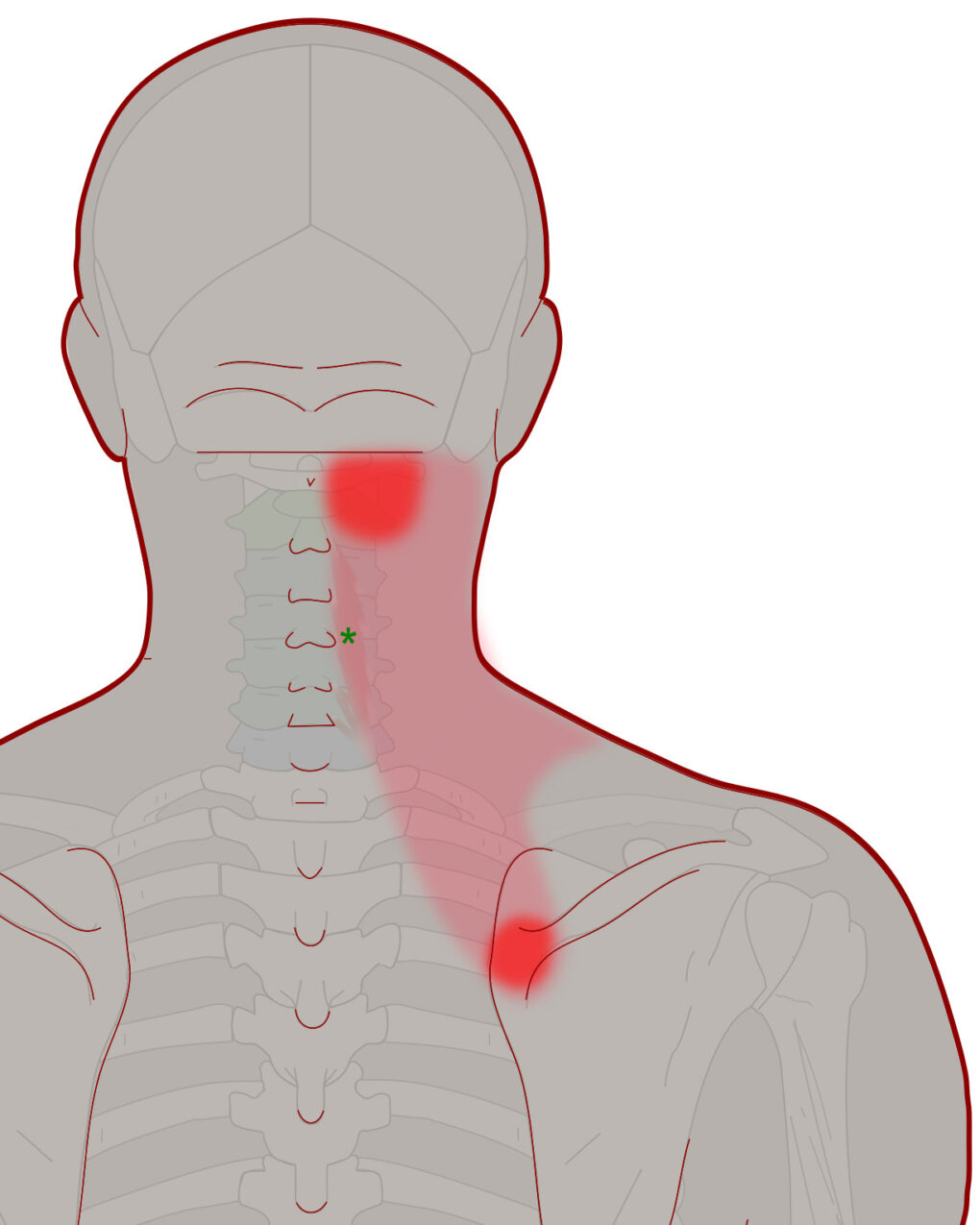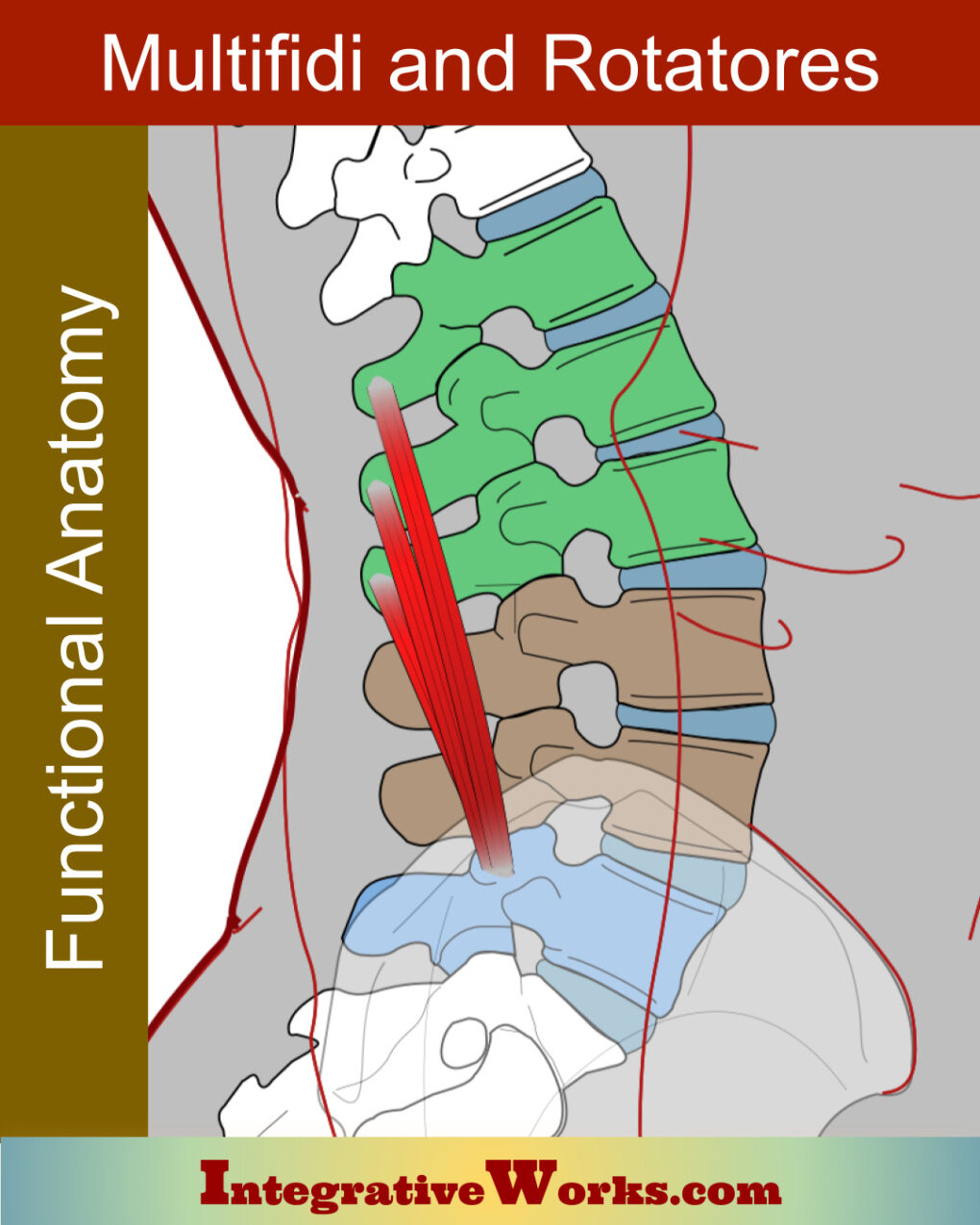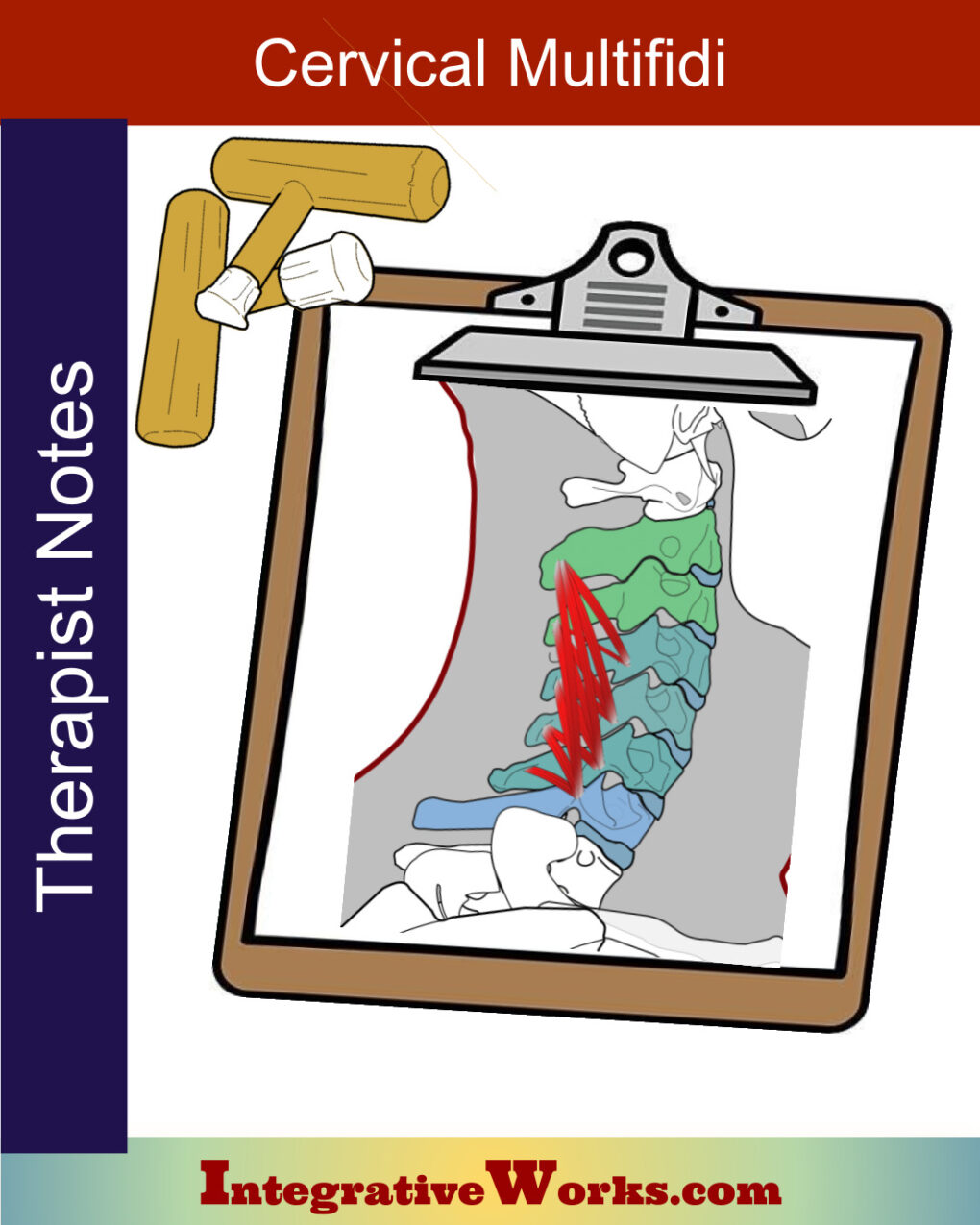Table of Contents
- How People Describe This Pain Pattern
- How You Activate and Intensify This Pain Pattern
- Self-Care – Getting Relief on Your Own
- Musculoskeletal Anatomy Behind Your Pain
- Therapy Notes for Massage and Bodywork
How People Describe This Pain Pattern
With this trigger point, people complain about tension and focus on the pain and tension at the base of their head. They may tell me about the tension in their neck and under the shoulder when I press for more detail. It is easy to feel the tender knot on the backside about halfway down the neck. Occasionally, people complain about the pain under the shoulder as being more of a bother.
More Painful than Stiff
People complain more about achy pain than restricted movement. This muscle doesn’t restrict the mobility of the neck as much as others. For Instance, the levator scapula creates a similar pattern but with more severe restrictions. If you have a lot of stiffness, refer to these posts on stiff necks.
Often, I have a mild version of this while I’m seated at the therapy table. Gently lifting my head and using stretch #2 and #3 from this self-care post shifts in the mid-neck with immediate relief.
How You Activate and Intensify This Pain Pattern

People are seldom aware of how they aggravated this trigger point, although many complain about doing too much computer work or sleeping in an awkward position. They are bothered by the focus of pain at the base of their head or under the shoulder when they crane their neck like this.
Whiplash
Also, this is one of the patterns that result from whiplash. It usually appears after the therapist has resolved more severe patterns.
Probably Another Pattern
It is worth noting that many trigger points have similar patterns of pain. People are usually clear about how those started and when it bothers them. Browse at this collection of posts on Forward-Head Posture and see if there is a trigger point that better matches your pattern.
The Musculoskeletal Anatomy Behind Your Pain
Musculoskeletal Anatomy
This post on anatomy contains standard information about the origin, insertion, function, and innervation of muscles. Additionally, it includes information on functional considerations and anomalies.
Find Related Posts
Anatomy posts have a grid of all related posts. This includes posts on pain patterns, self-care, therapy notes, NMT protocols, cranial techniques, and cases.
Getting Relief on Your Own
Clinically Proven
Self-Care Strategies
Self-Care Posts have common sections to make them easy to follow and understand:
- Activities to Avoid or Change
- Strategies for Quick Relief
- Stretches and Exercise for Longer-Lasting Relief
- Yoga Corner
Therapy Notes for Massage and Bodywork
Better Bodywork
Through Shared Expertise
Therapy Notes provide details for cranial, spinal, and local joint work. These notes also link to a traditional neuromuscular protocol.
By treating integrative components first, direct work on the muscle becomes less intense while providing longer-lasting relief.
Support Integrative Works to
stay independent
and produce great content.
You can subscribe to our community on Patreon. You will get links to free content and access to exclusive content not seen on this site. In addition, we will be posting anatomy illustrations, treatment notes, and sections from our manuals not found on this site. Thank you so much for being so supportive.
Cranio Cradle Cup
This mug has classic, colorful illustrations of the craniosacral system and vault hold #3. It makes a great gift and conversation piece.
Tony Preston has a practice in Atlanta, Georgia, where he sees clients. He has written materials and instructed classes since the mid-90s. This includes anatomy, trigger points, cranial, and neuromuscular.
Question? Comment? Typo?
integrativeworks@gmail.com
Interested in a session with Tony?
Call 404-226-1363
Follow us on Instagram

*This site is undergoing significant changes. We are reformatting and expanding the posts to make them easier to read. The result will also be more accessible and include more patterns with better self-care. Meanwhile, there may be formatting, content presentation, and readability inconsistencies. Until we get older posts updated, please excuse our mess.





